Summary - Starting / Enhancing Your Regenerative Agriculture Journey
- fidgets0-kilns
- Oct 7, 2022
- 5 min read
Updated: Dec 31, 2022

Cows Resting, Well Satisfied after a Morning Graze
While there is lots of information and courses about various aspects of soil health and regenerative agriculture, it is difficult to find a simple ‘starter’ package for someone who needs to, or is interested in, making the change from ‘modern’ agriculture to a way of farming that enhances and expedites what nature does.
There is no one way to undertake regenerative agriculture, nor can there be due to the many variables and multiple agricultural pursuits. There is no one product or machine to use. But there are some guiding fundamentals that pioneers have established over 30 years or more.
This slide show is an adjunct to a ‘manual’ that explains these points and provides an extensive list of resources for further learning. This is not intended as a technical or scientific package but rather a simple way for you to quickly get the overall picture and get started. It also provides links to lots of further learning opportunities. It will not try to sell you anything. I promise.
Why Regenerative Agriculture
Many farmers have seen need for change after noting soil deterioration while others have needed to find a way to farm without the substantive costs
Major problems following 70 years of ‘modern’ agriculture
Minimal biology life in the soil after stronger fertilisers & chemicals & plowing
Plants become soluble fertiliser dependent and microbes redundant
Increased costs of inputs especially chemical fertilisers
Destruction of soil structure, bare soil, limited water penetration & retention
Soil acidity, minerals tied up in soil, toxic aluminium becomes soluble
Soil compaction, loss of topsoil through water and wind erosion
Important soil carbon released into atmosphere by chemicals and plowing
Removal of animals for more grain growing has reduced nutrient input
How to Start Your Regenerative Agriculture Journey
Identify where you and your farm are right now - start some simple testing
Form some idea of where you would like you and your farm to be in the future
Start to transition away from past practices especially chemicals and plowing
Learn from the pioneers - see links to resources for information
Identify a few areas to start trialling your new techniques
Purchase inputs especially liquid sea minerals or other sea mineral product
Apply inputs and sow diverse cover crops or organise suitable contractor/s
Focus on flocculating the soil, overcoming compaction, rotational grazing
Spray microbial and fungal extracts
Start to look for signs of improvement especially under the soil surface
Regenerative Agriculture is a Journey, Not a Destination
Current Soil Status - Tests You Can Do Yourself
Soil Structure Test - dig hole, check for soil aggregates
Soil Smell Test - does it have a sweet, earthy smell
Extent of Root Growth Test - volume of roots
Root Structure & Depth Test - variety, depth, rhizosphere
Earthworm Count Test - count number in 300 x 300 x 300
Earthworm Food Test - dead organic matter on and below surface
Soil Colour Test - dark suggests soil organic carbon
Cow Pat Test - signs of dung beetle and dung worms
Subsoil Compaction Test - penetrometer or 10mm steel rod
Moisture Penetration Test - time how long it takes
Soil Coverage & Plant Diversity Test - no bare soil, lots of plant diversity
Soil Minerals Test - likely deficient if chemicals / artificial fertilisers used
Soil Acidity Test - likely acidic if chemicals used and no worms evident
Microbe Presence Test - few likely if chemicals used - EC Meter reading
Brix Test - sap sugar reading - Brix Meter / Refractometer
Record results, take photos to enable comparison with future testing and assessing improvement over time.
Useful Testing / Monitoring Equipment
Soil thermometer (Sub-soil temperature)
Refractometer (Brix Reading)
Penetrometer (Soil Compaction)
Soil Probe (check soil profile at depth without digging a hole)
Soil Microbiome Meter / EC meter (Electrical Conductivity, microbe presence)
Shovel (to check soil structure, root development, earthworms etc)
Metal / PVC tube about 100mm diameter and 100-150mm long (water infiltration)
Microscope / magnifying glass / camera (with zoom to view photos close up)
And a good nose to smell the soil!!!
This equipment is comparatively cheap and if not available from your local rural stockist, can be purchased online.
Fundamentals of Regenerative Agriculture
Gabe Brown - North Dakota in US - a leading pioneer with 30 years experience
Gabe’s Five Fundamentals
Minimal Soil Disturbance
Maintaining ‘Armour’ on the Soil Surface
Diversity of growing plants at any one time - no monoculture
Living Roots in the Soil as long as Possible - no bare ground
Animal Impact and diversity where possible - rotational grazing
Further Ways to Expedite Regeneration
Drive Your Regenerative Agriculture Journey into the 'Fast Lane' (if you want to) - greater and faster benefit from doing more things in short time frame
Soil Minerals - Achieving Readily Available Full Spectrum Nutrition
Apply Liquid Sea Minerals or other Sea Mineral Extract - increased soil, plant and animal health - improved electrical conductivity overcomes compaction
Earthworms - important contributors to soil health
Inoculate all Seed for a Strong Start for Growth for pasture & crops
Sow seed with source of microbes and carbon - eg WormHit Pellets
Foliar spray with microbial and fungal extracts - proprietary and/or self-made
Allow adequate rest periods between grazing events - plant recovery
Air in the Soil is Essential for Life - free nitrogen from the atmosphere
Humus Formation from liquid soil carbon can be a lasting benefit
Biochar's Potential to Enhance the Carbon Cycle - a home for microbes
Increasing Brix Brings Many Rewards
Water / Moisture Best Stored in the Soil - flocculate soil
What Will Start to Happen
Life will start to return to the soil, worms and rhizosphere being several of the more obvious while invisible microbes and fungi will rapidly multiply
Soil will start to open up, aggregates will start to form, compaction diminished
Rainfall will penetrate more readily and penetrate more deeply
Plants will improve in Brix and be more nutritious for livestock
Cow dung will improve and better attract dung beetles and dung worms
Soil armour will start to improve protecting and insulating the soil
Root depth and density will increase and release liquid carbon
Soil pH will start to improve and previously locked up minerals will be freed up
Dormant seed bank will start to emerge further increasing plant diversity
Soil carbon will start to develop varying levels of humus
Increasing & Improving Soil Biology & Structure
Signs of Good Things Happening Above and Below the Soil Surface
What to Do After Initial Testing to Move Forward
Wean off chemicals over 2 - 3 years
Flocculate soil with sea minerals to renew electrical current and start to overcome soil compaction
Avoid wheel traffic in paddocks when soil is wet
Start to restore soil life - sow inoculated seed for diverse cover / forage crop with WormHit Pellets
Spray diverse cover / forage crop periodically with likes of NutriSoil, compost tea and fungal extract to enhance soil biology
No bare soil, introduce animals where possible
Periodically repeat testing to monitor progress
Benefits of Regenerative Agriculture
Reduced soil compaction makes more soil available, increases topsoil
Healthier soil with increased air, mineral availability and biology
Better rain penetration and retention for extended growth
Greater resilience and less drought impact reduce risk
More nutritious plant growth for healthier stock and less vet visits
Increased Brix for stronger, more resilient plant growth and less pest issues
Restricted use of chemicals encourages beneficial insects to return
Reduced costs and better bottom line
Less stress and more enjoyment in farming operations
Improving farm for future generations, improving environment
There are so many elements involved in regenerating your farm both above and below ground. You may well wonder how it all fits together. Well, the beauty of this is you don't need to know the full complexity of nature on your farm, rather, having a basic understanding of the things outlined above supplemented by reference to appropriate links in the ‘Helpful Websites, Podcasts and Webinars’ and Beneficial Books blog in due course, it will be adequate for you to make amazing progress on your regenerative agriculture journey. Remember, soil is not just dirt for holding and growing plants with NPK but rather it is the enabler of every function intended by nature to facilitate all the cycles of existence - the carbon, nitrogen, water and mineral cycles, the Soil Food Web, photosynthesis etc. If any of these is compromised, in due course all will be compromised. Similarly, enhancing one may well benefit the others but enhancing all in a short time frame will lead to the greatest, fastest and most beneficial regeneration of your farm.
Extensive, Healthy Roots & Rhizosphere on New Plants
Improving Soil & Pasture, Strong & Healthy Heifers/Cows



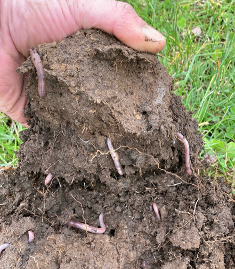

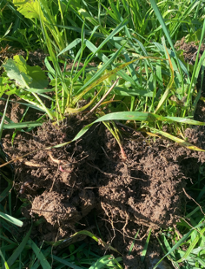

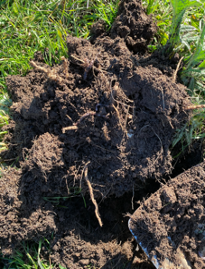







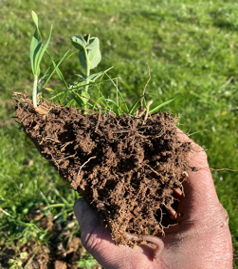

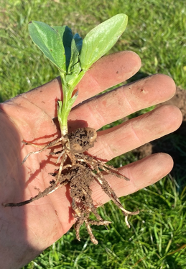



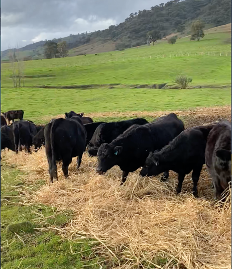






karatetoto karatetoto karatetoto karatetoto karatetoto karatetoto karatetoto karatetoto karatetoto karatetoto karatetoto karatetoto karatetoto karatetoto karatetoto karatetoto karatetoto karatetoto SLOT 4D SITUS TOTO SLOT 4D SLOT 4D SLOT 4D SLOT 4D SLOT 4D SLOT 4D SLOT 4D SLOT 4D SLOT 4D SLOT 4D SLOT 4D SLOT 4D SLOT 4D SLOT 4D SLOT 4D SLOT GACOR SLOT GACOR SLOT GACOR SLOT GACOR SLOT GACOR SLOT GACOR SLOT GACOR SLOT GACOR SLOT GACOR SLOT GACOR SLOT GACOR SLOT GACOR SLOT GACOR SLOT GACOR SLOT GACOR SLOT GACOR SLOT GACOR SLOT GACOR SLOT GACOR SLOT GACOR SLOT GACOR SLOT GACOR SLOT GACOR SLOT GACOR SLOT GACOR SLOT GACOR SLOT GACOR SLOT GACOR SLOT GACOR SLOT GACOR SLOT GACOR SLOT GACOR SLOT GACOR SLOT 4D SLOT 4D SLOT 4D SLOT 4D SLOT 4D SLOT 4D SLOT 4D SLOT 4D SLOT 4D SLOT 4D SLOT 4D SLOT 4D SLOT 4D SLOT SLOT GACOR SLOT GACOR SLOT GACOR SLOT GACOR SLOT GACOR SLOT GACOR SLOT GACOR SLOT GACOR SLOT GACOR SLOT GACOR SLOT GACOR SLOT GACOR SLOT GACOR SLOT GACOR TOTO SLOT TOTO SLOT TOTO SLOT TOTO SLOT TOTO SLOT TOTO SLOT TOTO SLOT TOTO SLOT TOTO SLOT TOTO SLOT TOTO SLOT TOTO SLOT SLOT PASTI WD SLOT PASTI WD SLOT PASTI WD SLOT…
Thermal and Mechanical Properties of Pultruded Composites
Pultrusion is a continuous manufacturing process used to produce fiber-reinforced polymer (FRP) composites with a constant cross-sectional shape. It involves pulling fibers like glass, carbon, or aramid through a resin bath, and then through a heated die, where the material is shaped and cured. The result is a strong, lightweight, corrosion-resistant composite that offers excellent structural integrity for a wide range of applications.
The pultrusion process starts by drawing continuous fiber rovings through a resin impregnator. The fibers are fully saturated with thermosetting resin systems such as polyester, vinyl ester, epoxy, or polyurethane. Once impregnated, the fibers are guided through preformers that align them before entering a heated die. Inside the die, heat…
Space-based fuel management refers to the technologies and systems designed to monitor, distribute, and optimize fuel usage in space missions. As spacecraft operate in environments where resupply is extremely limited or impossible, efficient fuel management becomes critical to ensure mission success and spacecraft longevity. This includes tracking fuel consumption, estimating remaining propellant, and regulating thruster activity to minimize waste. Advanced algorithms and sensors help manage fuel levels and pressure, providing real-time data to ground control and onboard autonomous systems. These technologies are essential for long-duration missions, satellite constellations, and deep-space exploration where every gram of fuel counts.
In recent years, innovations like on-orbit refueling and robotic servicing have significantly enhanced space-based fuel management capabilities. Companies and space agencies are developing refueling…
Ovarian cancer diagnostics involve various methods aimed at detecting the presence of cancer in the ovaries at an early and treatable stage. Since ovarian cancer often presents vague or no symptoms in its early stages, diagnosis is typically delayed until the disease has advanced. Common diagnostic tools include pelvic examinations, transvaginal ultrasound (TVUS), and blood tests such as the CA-125 biomarker, which may be elevated in ovarian cancer patients. However, CA-125 is not always specific, as levels can rise due to benign conditions as well. Imaging techniques like CT scans and MRIs help assess tumor size and spread, while a biopsy confirms the diagnosis by analyzing tissue samples for malignancy.
Recent advancements in ovarian cancer diagnostics are focused on improving early…
شيخ روحاني
شيخ روحاني
الشيخ الروحاني
شيخ روحاني سعودي
شيخ روحاني مضمون
Berlinintim